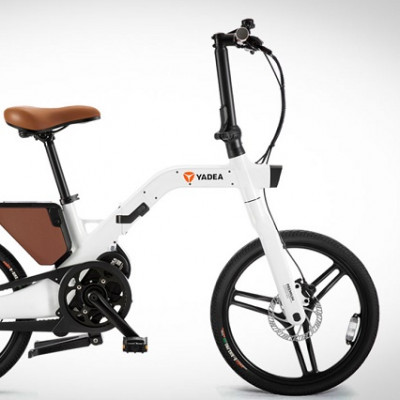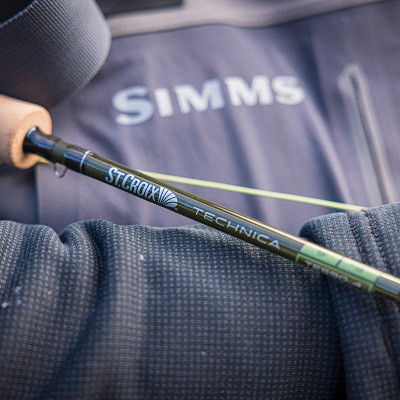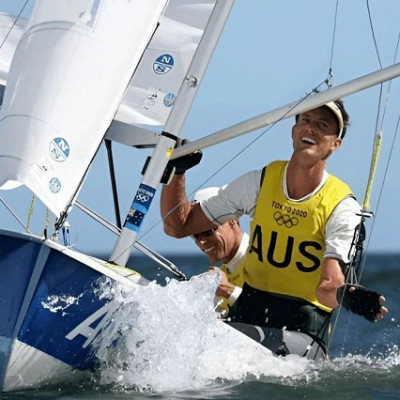For decades, peak performance has been sought through training, nutrition, and equipment advancements. In recent years, however, a groundbreaking field has emerged, offering additional innovative solutions to gaining that competitive advantage: nanotechnology.
By manipulating matter at the atomic and molecular level, the sporting world is continuing to embrace its potential in order to give athletes – professional or amateur – the edge over their competitors.
From golf clubs to surfboards, and swimsuits to cycling helmets, the technology is perhaps most broadly being deployed in sports clothing.
According to a report by Maximize Market Research, the global nano in the clothing sector is set to rise to USD 25.05 billion by 2029 – demonstrating a CAGR (combined annual growth rate) of some 23.4%.
The report added: “Enhanced performance and functionality are important driving factors in the growth of the nanotechnology clothing market. Nanotechnology facilitates the manipulation of materials at the nanoscale, resulting in clothes with exceptional properties that provide consumers with demands for high-performance apparel.
“For example, nano-coatings applied to sportswear create water-repellent surfaces, keeping athletes dry and comfortable during intense activities.”
It is being driven by the likes of the companies Polartec and Celliant, both headquartered in the US, who have embedded nanoparticles into fabrics to convert body heat into infrared radiation – reflecting it to the athlete.
The benefit? It promotes blood flow, muscle oxygenation, and improved thermoregulation. The aim is to enhance endurance and performance.
Celliant has built its portfolio through partnerships with the likes of Reebok and Adidas which incorporates its technology into its own products.
Celliant-powered apparel is, the company says, “used by everyone from elite athletes to weekend warriors”. It points to Celliant’s use in Under Armour products being used by the likes of NFL Super Bowl legend Tom Brady, the NBA’s Stephen Currey and world heavyweight boxer Anthony Joshua.
Since it was created in 2003, it has racked up more than USD 1 billion in retail sales.
Polartec – acquired by Milliken & Company in 2019 for an undisclosed fee – has similar tie-ups in place with the likes of Nike, Under Armour, and Salomon.
But it’s not all been plain sailing for the clothing marketplace.
Speedo's LZR Racer X swimsuit, developed with NASA technology, utilises nanotextured surfaces to reduce drag by mimicking shark skin.
The original LZR Racer reduced skin friction drag by 24% over previous Speedo swimsuits – additionally offering swimmers better oxygen flow to the muscles while holding the body in a more hydrodynamic position.
Not surprisingly, the garments were in big demand. But when 94% of all swimming races at the Beijing Olympics were won by athletes wearing it (which included 23 of the 25 world records broken), the sport’s governing body felt forced to intervene.
FINA banned the full-length suit from competitions in 2010 – although refined, shorter suits continue to be broadly used.
Such was the technology’s success, it was dubbed “technological doping”.
It’s a lesson in the careful deployment of such advances – usher in too big an advantage and there is the peril of falling victim to authorities fearing it gives athletes an unfair boost.
But it’s not just clothing that has seen nanotechnology deployed.
For many years, carbon nanotubes have been used in tennis rackets – with Roger Federer enjoying considerable success with this nano-enhanced Wilson racket.
The nanotubes increase the strength of the racket – increasing both control and power.
The inner cores of tennis balls have also embraced the advances – using a nano defence barrier to maintain air pressure and bounce. It dramatically increases the playable time of the ball.
Nanoparticles have also been used in golf clubs – most notably in the construction of the shaft thus improving the swing.
By using carbon nanotubes, manufacturers can ensure the shaft is as perfectly cylindrical as possible. Not only does it help the player, but it makes the shaft stronger and longer lasting by creating a tightly packed and neatly meshed layer of carbon to the weakest part of the shaft.
Similar technology has been used in tennis and badminton rackets.
Golf club manufacturer Ping uses a nano chrome finish on its club head to promote durability, while Callaway has used it to enhance ball speed and spin control.
In football, Nike has in recent years been using its ACC (All Conditions Control) technology – a thin water-based polymer applied to its cleats (or studs) which enhance grip and ball control in all weather conditions.
While in professional cycling, teams have used nanotube-based lubricants on bicycle chains to reduce friction, while carbon nanotubes have been used in both frames and wheels to enhance strength and shock resistance.
Nano coatings are also regularly deployed for both bicycle and motorcycle helmets – allowing them to be more water resistance and reduce drag.
Monitoring athletes’ performance is also harnessing the remarkable ability of nano.
The company Xsens – part of global firm Movella - integrates biocompatible sensors into athlete apparel, using nanomaterials to monitor vital signs like heart rate and respiration. This real-time data allows for personalised training and injury prevention.
And then, of course, there are the benefits for when the inevitable injuries occur.
By incorporating nanofibers into wound dressings, it can accelerate healing, provide superior breathability and reduce infection risks.
While nano-biotechnology companies like Australia-based Protagonist Therapeutics is developing nanoparticles that encapsulate drugs and deliver them directly to injured tissues. This targeted approach reduces side effects and promotes faster healing.
US-based NanoVibronix utilises sonication technology to create nanoparticles from essential nutrients, enhancing their bioavailability and absorption within the body. This can optimise nutrient intake for athletes, supporting peak performance.
While specific figures for the nanotechnology in sport market remain elusive, its integration within the broader nanotechnology market and positive investment trends paint a promising picture.
Significant growth is anticipated, fuelled by ongoing research, development, and investor confidence. As the technology matures and ethical considerations are addressed, nanotechnology's impact on professional and competitive sports is likely to become even more transformative.
Read the original article on Nano Magazine.







